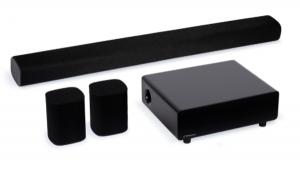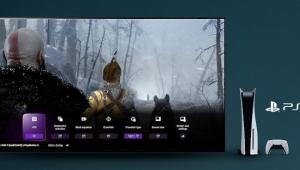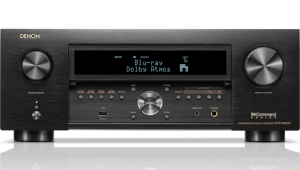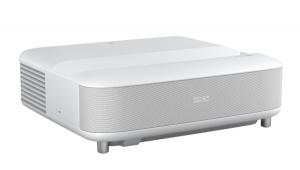First Listen: Audyssey DSX Page 2

THE SURPRISE
I originally thought I'd skip auditioning DSX with stereo music. After all, the AVR-4801CI doesn't let you activate DSX when you're listening to a stereo source, and Dolby's competing PLIIz technology was designed specifically for movies, not for music.
But as I was playing around with the receiver I realized that I could tack DSX processing not only onto 5.1 and 7.1 material, but also onto matrix surround sound created with technologies like Pro Logic II (the 5.1-channel version, not the "z" version) or DTS Neo:6. To satisfy my technical curiosity, I decided to see what DSX would do to my favorite CDs. I activated the Pro Logic II Music mode in the Denon, switched on DSX, and sat back to hear what I frankly expected would be sonic carnage.
At first, the results were discouraging. There's no center channel on a stereo CD, of course, and when DSX got hold of vocals split between left and right channels I heard the same ethereal, unfocused effect I got with the voiceover in Ratatouille.
Then I remembered that the Pro Logic II Music mode includes a center width control that lets you adjust the mix of vocals into the center channel. The AVR-4801CI uses Dolby's recommended default setting of 3 for this control - midway between 0 (hard center) and 7 (no center). I cranked the control all the way to 0, put on Steely Dan's "Aja" (my reference track for what I consider a "normal" music mix), and was immediately enthralled.
All of the phasey effect from the vocals was gone, and the music seemed to break free of the speakers in a way it couldn't possibly do with a stereo system or even a 5.1 system. It sounded tonally pure and naturally ambient, like a stage full of musicians playing in a small concert hall with the PA system used only for vocals. I heard no weird artifacts or objectionable effects.
Switching to jazz saxophonist Miguel Zenon's Jibaro CD, I got a bigger, more ambient, and more involving sound than Pro Logic II Music mode could deliver without DSX. When I shut off all the Sunfires except for the height and width speakers, I was surprised to hear that there was a lot of piano and drums coming from the added channels. However, when I resumed listening after reconnecting the other speakers, my ears didn't localize any particular sounds to the height and width speakers. As with Steely Dan, the presentation sounded simple, natural, and spacious.
The combination of DSX with the PLII Music mode didn't sound great with everything; simple recordings of a couple of guitars and a vocalist sound weird when expanded beyond stereo, no matter what technology you're using. But with the AVR-4801CI, you can go back to stereo sound with the touch of a button if you don't like the surround effect.
THE VERDICT
It's easy to make the case that Dolby erred on the side of restraint with PLIIz. If I were an installer, I'd be hesitant to spec those extra height speakers for fear of my client's wrath if he or she doesn't hear anything coming out of them. That's no concern with Audyssey DSX, though: There's absolutely no doubt that you'll hear its effects.
What I can't tell you is whether or not you'll like DSX. Applying additional processing to 5.1 or 7.1 is like adding flavoring to a vodka martini. Will you prefer the original, with nothing but vodka and maybe a touch of vermouth, or will you like it better with apple juice or chocolate liqueur added? I don't know.
I will tell you this, though. If I were a real custom installer rather than an A/V geek who occasionally plays at custom installation, I'd want to get DSX into my client's theaters ASAP. While it does occasionally produce effects I don't enjoy, it often delivers a wow factor I've heard in no new audio technology since the introduction of Dolby Digital. And I think that the bigger the theater, the more it'll benefit from DSX. Last, it's a fun new thing for surround-sound enthusiasts to play with, and we haven't had that in quite some time.
- Log in or register to post comments




















































